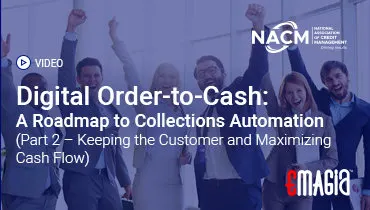Extracting data from Enterprise Resource Planning (ERP) systems is a critical process for organizations aiming to harness the full potential of their business data. This comprehensive guide delves into the various methods, tools, and best practices for extracting data from ERP systems, ensuring that businesses can make informed decisions based on accurate and timely information.
Understanding ERP Data Extraction
ERP systems are integrated platforms that manage a company’s core business processes. Extracting data from these systems involves retrieving information from various modules such as finance, human resources, supply chain, and customer relationship management. The goal is to access, analyze, and utilize this data to improve business operations and strategic planning.
Methods of Extracting Data from ERP Systems
1. Manual Data Export
Manual data export involves using the ERP system’s built-in functionalities to export data into formats like CSV or Excel. While this method is straightforward, it can be time-consuming and prone to errors, especially with large datasets.
2. Application Programming Interfaces (APIs)
APIs provide a standardized way to access and extract data from ERP systems. By leveraging APIs, businesses can automate data extraction processes, ensuring real-time data availability and reducing manual intervention.
3. Extract, Transform, Load (ETL) Processes
ETL processes involve extracting data from the ERP system, transforming it into a suitable format, and loading it into a data warehouse or another system for analysis. ETL tools can handle large volumes of data and ensure data consistency across systems.
4. Optical Character Recognition (OCR)
OCR technology can be used to extract data from scanned documents or images and integrate it into the ERP system. This method is particularly useful for processing invoices, receipts, and other paper-based documents.
Tools and Technologies for ERP Data Extraction
1. Integration Platforms
Integration platforms like DreamFactory offer connectors and tools to facilitate data extraction from various ERP systems, providing a unified interface for data access.
2. Business Intelligence (BI) Tools
BI tools can connect to ERP systems to extract and analyze data, providing insights through dashboards and reports. Integrating ERP with BI enables real-time data visualization and decision-making.
3. Excel Add-ins
Tools like insightsoftware’s Wands for SAP allow users to connect Excel directly to ERP systems, enabling real-time data analysis within a familiar spreadsheet environment.
Best Practices for ERP Data Extraction
1. Data Validation and Quality Assurance
Ensuring data accuracy is paramount. Implementing validation checks and regular audits can help maintain data integrity during the extraction process.
2. Security and Compliance
Protecting sensitive data is crucial. Implement role-based access controls and comply with regulations like GDPR to safeguard data during extraction.
3. Scalability
As businesses grow, the volume of data increases. Employ scalable solutions that can handle large datasets efficiently, ensuring consistent performance.
Challenges in ERP Data Extraction
- Data Complexity: ERP systems often contain complex and interrelated data structures, making extraction challenging.
- System Compatibility: Integrating ERP data with other systems requires compatibility and may involve custom development.
- Resource Intensive: Data extraction processes can be resource-intensive, requiring significant time and technical expertise.
How Emagia Simplifies ERP Data Extraction
Emagia offers advanced solutions to streamline the data extraction process from ERP systems. By leveraging AI-driven technologies, Emagia automates data extraction, ensuring accuracy and efficiency. Their platform supports integration with various ERP systems, providing real-time data access and analytics capabilities. Emagia’s solutions are designed to handle large volumes of data, making them suitable for businesses of all sizes.
Frequently Asked Questions
How do I extract data from an ERP system?
Data can be extracted using manual exports, APIs, ETL processes, or OCR technologies, depending on the ERP system and business requirements.
What tools are available for ERP data extraction?
Tools like DreamFactory, BI platforms, and Excel add-ins facilitate data extraction from ERP systems.
How can I ensure data security during extraction?
Implement role-based access controls, data encryption, and comply with relevant data protection regulations.
What are the challenges in extracting data from ERP systems?
Challenges include data complexity, system compatibility issues, and resource-intensive processes.
How does Emagia assist in ERP data extraction?
Emagia provides AI-driven solutions that automate and streamline the data extraction process, ensuring accuracy and efficiency.
Extracting data from ERP systems is a multifaceted process that requires careful planning, the right tools, and adherence to best practices. By understanding the methods and challenges involved, businesses can effectively harness their ERP data to drive informed decision-making and strategic growth.



